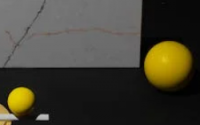SCI写作四种时态用法指南

【意得辑论文润色】英语时态用法复杂且极讲究逻辑,SCI写作中最常见的是一般过去时及一般现在时,现在完成时及过去完成时次之。典型的IMRaD 论文需含引言、方法、结果与讨论几部分,时态使用依章节而变化。譬如引言部分的SCI写作通常用现在时和过去时;文献综述情况较为复杂,回述与研究问题相关的文献时多用一般过去式,对过去的研究发表个人评论时则用现在时,如遇新近发表的既有研究可以使用现在完成时;而研究结果通常用过去式更多。以下是上述四种时态的简单用法指南:
一般过去时:用来描述发生于过去的具体行为或事件,且该行为或事件在同个句子里不与现在发生连接。
例句:
1. We selected 5 plants at random.
2. Tanaka reported that 1000 grains of wheat weighed 40 grams.
3. Watson and Crick published their landmark paper on the structure of DNA in 1953.
一般现在时:用来描述真理、或不会发生改变的事实。
如:
1. The sun rises in the east(太阳从东方升起).
2. Human babies generally start speaking when they are two years old(婴儿一般两岁时就开始说话).
3. In July and August, it rains in most parts of India(印度大部分地区七、八月有雨).
此外,一般现在时也隐含着作者认定研究结果是真实的,且与目前的研究相关,如“Robinson maintains that soaking seeds in strong acids help in breaking seed dormancy.”。而在最后重又提及前文中的相关内容时,也应使用一般现在时:“Section 2.3 discusses the advantages of soaking seeds before sowing them.”。
现在完成时:用来描述已经过去但仍和现在有关联的事件、发展趋势,或讲述已结束、新近发生或仍在持续的事件,例如:“The use of cell phones or mobile phones to access the Internet has increased recently.”;“Multi-megawatt turbines have been used in Europe for offshore sites.”。
过去完成时:用来描述发生在过去不同时候但相互关联的两起事件,在材料与方法部分叙述较为早期的实验操作时尤其适用。例如:“By the time they were sown, the seeds had already germinated.”;“Those candidates that had been exposed to radiation earlier were excluded.”。
意得辑为专业的学术论文润色平台,提供包括语言编辑、学术翻译、论文润色等服务。我们的编辑团队由经验丰富的学术专家组成,为您的论文提供高质量的编辑和翻译服务,帮助您在学术领域取得更好的成绩。




